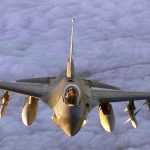Nigeria And Kenya Explore Satellite Partnership: 7 Things To Know
Nigeria and Kenya are exploring a landmark collaboration in satellite technology that could reshape intra-African cooperation in space services. The discussions follow a five-day official visit by a...

Nigeria and Kenya are exploring a landmark collaboration in satellite technology that could reshape intra-African cooperation in space services. The discussions follow a five-day official visit by a delegation from the Kenyan Space Agency (KSA), led by Director General Brigadier (Rtd) Hilary Kipkosgey, to the Nigeria Communications Satellite Limited (NIGCOMSAT) control facility in Abuja. The delegation was hosted by NIGCOMSAT Managing Director, Jane Nkechi Egerton-Idehen.
Table Of Content
Here are seven key things to know about this strategic partnership:
1. What the collaboration entails
The deal cuts across three Nigerian space entities:
-
NIGCOMSAT for commercial satellite services.
-
NASRDA (National Space Research and Development Agency) for capacity building and R&D.
-
Defence Space Agency (DSA) for national security engagements.
Kenya intends to source satellite services directly from Nigeria, reducing dependence on non-African providers. The partnership also covers training, mission control, earth observation, remote sensing, and the use of AI in space applications.
2. Why Nigeria’s satellite?
Nigeria boasts one of Africa’s most advanced space programmes, having successfully launched and operated six satellites in 25 years. Its NigComSat-1R is already operational, with plans for NigComSat-2A and 2B to expand coverage.
While Nigeria’s C-band and L-band signals reach Kenya, its Ku-band (broadcasting) and Ka-band (internet) do not—coverage gaps the new satellites will address.
3. How Nigeria benefits
Currently, only 7% of NIGCOMSAT’s broadband capacity is in use, leaving 93% idle. Leasing capacity to Kenya will help utilise these resources while generating revenue.
-
NIGCOMSAT targets ₦8 billion in revenue within three years from expanded broadband services.
-
Annual revenue projections from diversified services stand at ₦3 billion.
-
Kenya’s involvement could strengthen Nigeria’s case for funding future satellites.
4. What Kenya stands to gain
For Kenya, the partnership provides affordable access to satellite bandwidth critical for:
-
Expanding 4G/5G mobile networks in rural areas.
-
Supporting agritech, e-government, and disaster management.
-
Bridging the digital divide in remote regions.
-
Accessing Nigeria’s Earth Observation data through NASRDA for agriculture, forestry, and infrastructure mapping.
5. Cost efficiency vs. independence
Rather than embarking on a costly independent satellite project, Kenya can leverage Nigeria’s infrastructure. This reduces costs, offers regional flexibility, and promotes African-led solutions instead of relying on global space giants.
6. A step toward African space independence
The collaboration underscores Africa’s ability to provide internal solutions to its infrastructure needs, challenging long-standing reliance on external powers for satellite services.
7. What’s next?
The Abuja visit was exploratory. Next steps include:
-
A technical evaluation of Nigeria’s current and planned satellite capacity.
-
Drafting and negotiating a Memorandum of Understanding (MoU) covering pricing, capacity leasing, joint research, training programmes, and long-term access to the upcoming satellites.









No Comment! Be the first one.